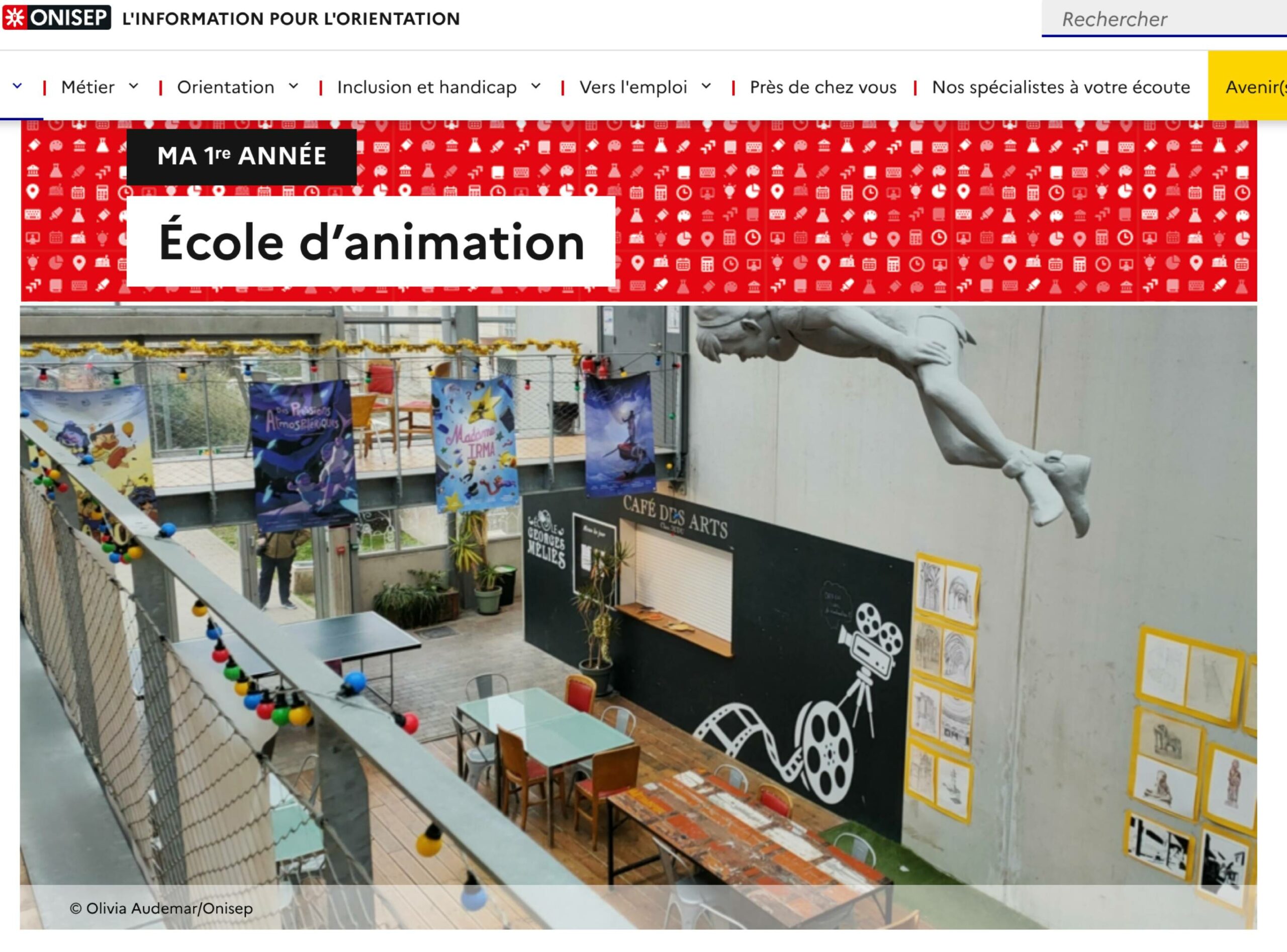Published on 24/04/2025 by Pauline Jaubert
The school’s name itself is an invitation to creation! Welcome to the École Méliès, named after the pioneer of visual effects in cinema. Located in Orly, in the Paris region, the school offers several courses, including animation. Al, a 4th-year student, looks back on their study journey and explains what the “Animated Image Artisan” course is about.
Why did you choose this training course?
“I knew very early on that I wanted to work in an artistic field,” explains Al. “I’ve always enjoyed drawing, and I was passionate about comic books and animated films…” After getting their baccalaureate, Al decided to study for a DN MADE (National Diploma for Art and Design Professions) focused on children’s illustration and comics at Renoir high school in Paris.
After taking part in a workshop run by a professional in animation, everything clicked for Al. “I’ve always loved animation, but I was afraid that teamwork, which is essential in this field, wouldn’t suit me. Thanks to this collaborative workshop, I realised that I was capable of doing it – and that I actually liked it!” After obtaining their DN MADE, Al joined the École Méliès.
How did the selection happen?
It all started with a remote exam focused on storytelling. “Coming from a comic books course, I felt pretty comfortable with the concept of storyboard (translating the script into images, frame by frame) and narrative sequencing.”
Al then took an observational drawing and perspective exam, followed by an admission interview. “The interview went really well. I liked the school’s philosophy and its idea of image handicraft.” During this interview, Al presented their portfolio, showed their artistic work, and explained their creative approach.
What differs from high school?
During their first year, students have lectures in observational drawing, perspective, volume, and life drawing. “It is important to know the human body and understand how it moves… the goal is to learn to observe and reproduce the living. We reuse these fundamentals later in animation.”
Each student is also invited to build their own “imaginary museum”, filled with their artistic references and favourite films. “The aim is to gather everything that moves us, learn to analyse it, and share it with others. It can be films, but also artworks, novels, monuments, etc. All of this nurtures our creativity and feeds our imagination.”
What rhythm did you have to adapt yourself to?
At first, Al was worried about the pace in an animation school. “I was scared the rhythm would be hectic, with projects piling up and having to work days and nights. But that was not the case at all!”
There is a lot of work, of course, but students can organise themselves and come to the school whenever they want to work on their projects, outside of lectures. “The school is open for us 24/7. All the equipment is at our disposal.”
What do you like about this training course?
Al enjoys the variety of techniques covered. In the first year, students discover stop motion and then animation. “In the second year, we have traditional animation classes, first on paper and then on the computer. I really like 2D and the layout (the stage between storyboarding and animation) of the characters, which builds a bridge between drawing and comics.”
“Coming from a comic books course, I felt pretty comfortable with the concept of storyboard (translating the script into images, frame by frame) and narrative sequencing.” – Al, 4th-year student at the École Méliès
What project did you undertake?
The major asset of an animation school is the opportunity to create several films. “During the 3rd year, we have to direct a 3D animation film on our own. This gives us the chance to discover the whole production pipeline.” In the 4th year, the final-year film is made in teams. “The year before, each student suggests a pitch. Nine of those projects are selected, and we then develop them in teams of 5 to 7 students.”
In their team, Al was in charge of character design, layout, and 2D animation, then compositing (integrating several layers of images during editing, some shot, others created digitally). “We received help from professionals throughout the whole creation process.”
Which hardships did you encounter?
“3D is very technical. I had a few difficulties, especially with rigging (the skeleton of the character to be animated). It is interesting but quite hard to memorise!” admits Al.
The question of what happens after graduation can also be challenging. “To prepare us for entering the industry, we have classes on professional statuses (authors, occasional workers), salaries, and collective bargaining agreements… Even if it is quite complex, it gives us an insight into what comes next. The school also adapts its courses to the needs of the job market,” Al concludes.
What’s next?
Al is faced with two options: continue studying for a year in a work-study Master’s 2 (M2 with UPEC and INA), or start working. “I would rather work and specialise in character design or 2D animation, to keep drawing and telling stories.”
© Olivia Audemar / Onisep


